Develop a modern infrastructure system
Infrastructure, including traditional infrastructure such as transportation, energy, water conservancy and logistics, as well as new infrastructure with information networks as the core, plays a strategic, basic and leading role in the overall development of the country. The Outline proposes that during the "14th Five-Year Plan" period, we should promote the construction of traditional infrastructure and new infrastructure in a coordinated way, and build a modern infrastructure system that is systematic, efficient and practical, intelligent and green, safe and reliable.
I. Major achievements of the 13th Five-Year Plan Period
During the "13th Five-Year Plan" period, the layout of China's infrastructure network has continued to improve, the overall quality has been significantly improved, the comprehensive efficiency has been significantly improved, the institutional reform has been steadily advanced, and the formation of a super-large-scale infrastructure network has strongly supported and led economic and social development.
First, the advantages of network scale are prominent. The "13th Five-Year Plan" period is a key period for China's infrastructure network to accelerate and improve. The total length of optical cables increased from 24.86 million kilometers to 47.5 million kilometers by the end of 2019; the installed power generation capacity increased from 1.53 billion kilowatts to 2.01 billion kilowatts; and the routing of 220 kilovolt or above power lines increased from 609,000 kilometers to 755,000 kilometers. The length of oil and gas pipelines has increased from 109,000 kilometers to 150,000 kilometers; the total storage capacity of reservoirs has increased from 858.1 billion cubic meters to 903.5 billion cubic meters; the effective irrigated area of farmland has increased from 65.87 million hectares to 68.27 million hectares, accounting for about one-fifth of the world's total irrigated area; and the overall carrying capacity of urban infrastructure has been continuously enhanced. The operating mileage of high-speed railways, the operating mileage of expressways, the operating mileage of urban rail transit, the number of berths of 10,000-ton class and above at ports, the installed power capacity, the scale of the power grid, and the scale of the fourth-generation mobile communication (4G) network all rank first in the world.

Second, the service capacity has been continuously improved. During the "13th Five-Year Plan" period, China's passenger turnover increased from 3 trillion person-kilometers in 2015 to 3.5 trillion person-kilometers in 2019, and the cargo transport volume and turnover increased from 41.7 billion tons and 17.8 trillion ton-kilometers in 2015 to 47 billion tons and 19.9 trillion ton-kilometers in 2019, respectively. Railway passenger turnover and freight volume, highway passenger and freight volume and freight volume, waterway freight volume and freight volume rank first in the world. The transmission capacity of "west-east power transmission" increased from 140 million kilowatts at the end of 2015 to 240 million kilowatts at the end of 2019, and the mileage of natural gas main pipeline network increased from 64,000 kilometers in 2015 to 94,000 kilometers in 2019. The East-central route of the South-to-North Water Diversion Project has diverted more than 30 billion cubic meters of water, directly benefiting more than 100 million people. Information services cover more areas and benefit more people. The number of mobile communication users and the number of Internet users increased from 1.27 billion and 680 million in 2015 to 1.6 billion and 830 million in 2019, ranking first in the world. Urban public service indicators such as public water supply penetration rate, gas penetration rate and sewage treatment rate generally exceed 90%.
Third, the level of innovation has significantly improved. During the "13th Five-Year Plan" period, China has basically formed a complete and complete set of technical equipment system, and has a number of technological innovation achievements with independent intellectual property rights. High-speed railways, long-span Bridges, UHV power transmission, super large water conservancy projects, a new generation of mobile communications, a new generation of Internet and other technological fields have achieved leap-forward development. China has completed and actively operated the world's first quantum secure communication backbone line "Beijing-Shanghai Trunk Line", and its construction technologies such as offshore deep-water ports, regulation of giant estuaries and waterways, and large-scale airport projects have entered the world's advanced or leading ranks, forming a full-chain infrastructure industrial system from planning consultation, engineering design, financing, construction, operation and maintenance. The development of 5G, artificial intelligence and other new infrastructure is accelerating; the application of big data, cloud computing and blockchain in traditional infrastructure is accelerating; and the level of international connectivity is steadily improving.
Fourth, institutions and mechanisms have been continuously improved. During the "13th Five-Year Plan" period, substantial steps were taken in railway shareholding reform, and the former China Railway Corporation was successfully restructured into China National Railway Group Co., LTD. The reform of the oil and gas pipeline network system took an important step forward, and the National Oil and Gas Pipeline Network Group Co., Ltd. was established. Further progress was made in the reform of the electric power system, and power grid enterprises were encouraged to focus on their main business and open their competitive businesses in an orderly manner. Major progress was made in the reform of the water supply system, and China South-to-North Water Transfer Group Co., Ltd. was established. Reform in investment and financing continued to deepen, the expansion and application of the model of cooperation between the government and private capital was accelerated, the division of fiscal powers and expenditure responsibilities between the central and local governments was gradually clarified, and the investment coordination mechanism was further improved. The systems and mechanisms for regional integration in infrastructure development and operation along the Yangtze River Economic Belt, the Beijing-Tianjin-Hebei region, the Yangtze River Delta, Guangdong, Hong Kong and Macao have been continuously improved, and the level of infrastructure connectivity and service mutual guarantee has been significantly improved.
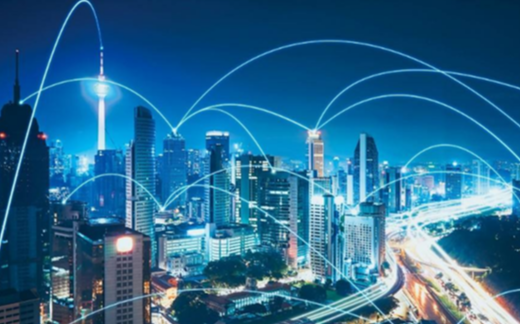
Second, problems and difficulties we face
Although China's infrastructure development has made historic achievements, the requirements for high-quality development, the infrastructure system is still not perfect, the level of coordinated, systematic and holistic development is not high, and the shortcomings of service capacity, operational efficiency and service quality are still relatively obvious. First, the level of systematic coordination is not high. The spatial layout needs to be optimized, inter-regional development is unbalanced, rural infrastructure is in arrearage, and connectivity, joint construction and sharing of urban clusters and metropolitan areas are not high. Point, line and surface do not match, node capacity is insufficient, the function is not perfect. There is insufficient overall planning and balance of various types of infrastructure, and the relationship between substitution, complementarity, coordination and restriction is not properly handled. Second, the facility service efficiency is not high. Heavy construction over maintenance, heavy hardware over software is still prevalent, the level of coordinated development of the whole life cycle is not high, the level of fine management needs to be improved, and the supply of facilities and services is difficult to meet diversified and diversified needs. Third, intelligent development needs to be accelerated. The digital upgrading of traditional fields and the construction of new infrastructure have just started, and there is still a big gap with developed countries. The scenario of the integration of new and traditional infrastructure is not clear, and the standards, norms and policy systems are still not perfect. Fourth, the mode of green development has not yet taken shape. The sustainability of the development model is insufficient; resources, environment and ecological issues in construction and operation are not considered enough; the energy structure and transportation structure need to be optimized; and the space for energy conservation in infrastructure has not been fully tapped. Fifth, the security guarantee capacity is still insufficient. In the face of natural disasters, public health, major accidents and other emergencies, the ability to respond is weak, the resilience of the network needs to be enhanced, the problem of critical infrastructure and technical equipment is still serious, and the overall national security capacity needs to be improved.
At the same time, it should be noted that the high-quality development of infrastructure in the "14th Five-Year Plan" period still faces some difficulties. First, we need to accelerate the transformation of the development model. For a long time, China has formed an infrastructure development model that focuses on construction, takes projects as the starting point, takes government as the main body, and takes bank loans as the main financing means, which has played an important role in eliminating infrastructure bottlenecks as soon as possible. As China's infrastructure enters a stage of development in which it pays equal attention to reinforcing its shortcomings, improving its functions, optimizing its services and integrating its development, the traditional development model is difficult to meet the needs of future development and urgently needs to change. Second, the difficulty of factor guarantee is increasing day by day. At present, the projects to be built generally have the characteristics of high engineering cost, poor economic benefits, limited local financial resources, and social capital participation is not strong. Under the pressure of the goal of carbon neutrality, the ecological environment is constrained, land, corridor and other resources are increasingly strained, the cost of raw materials, labor and other factors is rising, and the construction of infrastructure projects is difficult to promote. Third, institutional reform is not yet in place. The reform of the airspace management system is lagging behind, the market mechanism in the water conservancy sector is not fully playing its role, and reforms in key areas and key links such as electricity and oil and gas need to be deepened. Investment and financing model innovation is insufficient, excessive reliance on government investment, the role of finance is not fully played, and the technical and economic characteristics of new infrastructure do not match.
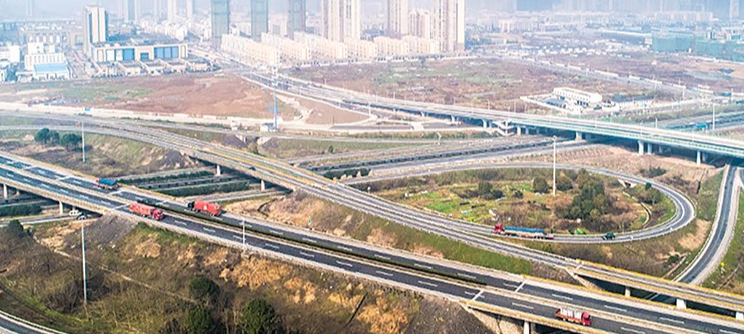
Third, the requirements of the situation facing the "14th Five-Year Plan" period
From an international perspective, developed countries have accelerated the intergenerational replacement of infrastructure, and the United States, the United Kingdom, and Japan have successively proposed action plans or national strategies for the intelligent transformation of infrastructure. We need to follow the direction of intergenerational replacement of infrastructure, enhance the scale advantage of infrastructure networks, service capabilities and adaptability to demand, and accelerate the intelligent upgrading of traditional infrastructure and the development of new infrastructure.
From a domestic perspective, building a new development pattern, forming a strong domestic market, and further releasing the potential of domestic demand require improving the precision and effectiveness of infrastructure investment, and improving the level of coordinated development and service quality throughout the life cycle. A spatial pattern with city clusters and metropolitan areas as the main resource factors and growth poles is taking shape, and integration of urban and rural areas and revitalization of rural areas are being deepened. Infrastructure development in different regions needs to be carried out in accordance with local conditions and with precision. Accelerating the construction of an innovative country requires accelerating the layout of new infrastructure such as 5G, big data, artificial intelligence, industrial Internet, and Internet of Things. To promote the comprehensive green transformation of economic and social development and build a beautiful China, we need to change the mode of investment and operation management of infrastructure elements as soon as possible, and develop green and low-carbon infrastructure. Adhering to the overall national security concept and building a strong national security barrier requires that security be implemented in all aspects and the whole process of infrastructure development and enhance strategic security guarantee capabilities.
Fourth, the development direction and key tasks of the 14th Five-Year Plan period
During the "14th Five-Year Plan" period, it is necessary to take overall optimization and coordinated integration as the guide, promote infrastructure construction in a coordinated way, and improve the level of networked and integrated development and system resilience.
1. Accelerating the construction of new infrastructure
The "14th Five-Year Plan" period is a critical period for the large-scale construction, development and evolution of new global infrastructure, and an accelerated period for the transformation and upgrading of traditional infrastructure by relying on modern information intelligent technology. Focusing on strengthening digital transformation, intelligent upgrading, integrated innovation support, layout and construction of information infrastructure, integration infrastructure, innovation infrastructure and other new infrastructure.
The first is to build a high-speed, universal, integrated, interconnected, secure and efficient information infrastructure. We will accelerate the large-scale deployment of 5G networks and promote 5G converged applications. We will promote the upgrading of gigabit optical fiber networks, expand the number of interconnection nodes in backbone networks, and carry out projects to improve basic networks. Accelerate the construction of a national integrated big data center system, strengthen the overall planning and intelligent scheduling of computing power, and build a national hub node. Build a space infrastructure system for communication, navigation and remote sensing with global coverage and efficient operation.
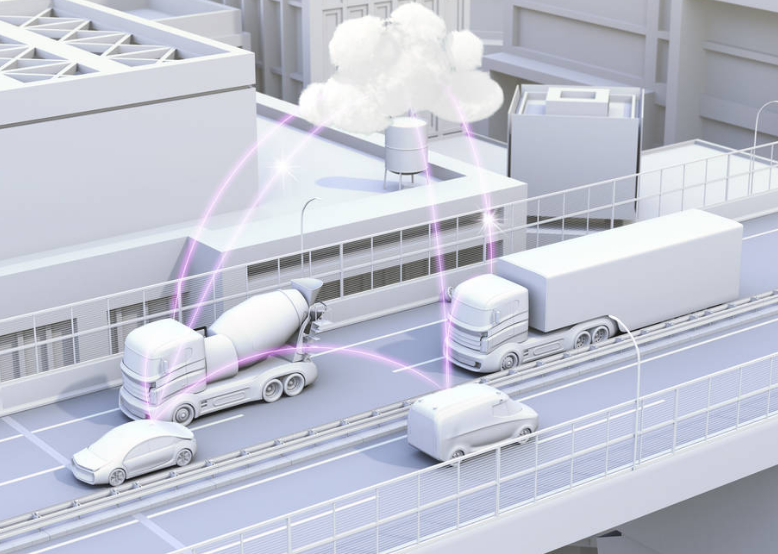
Second, we need to raise the level of integrated infrastructure development. In light of the development direction and requirements of various types of infrastructure, demand-oriented, speed up the digital transformation of traditional infrastructure such as transportation, energy, municipal affairs, logistics, and water conservancy, promote the comprehensive development of the Internet of Things, and actively and steadily develop the industrial Internet and the Internet of vehicles.
Third, we will accelerate the development of innovation infrastructure. We will further implement the innovation-driven development strategy, strengthen overall planning and layout, and continue to improve the linkage construction and integrated development of facilities in the national innovation system. We will plan major scientific and technological infrastructure in advance, optimize and improve the layout of science and education infrastructure, and accelerate the construction of industrial innovation platforms such as national industrial innovation centers and engineering research centers. Class E and Class 10E supercomputing centers will be built to effectively serve scientific exploration and research.
Fourth, establish a sound policy system for new infrastructure development. New infrastructure covers a wider range, market demand is changing rapidly, technological innovation is developing rapidly, and the development environment is changing rapidly. We need to better leverage the decisive role of the market in resource allocation and mobilize the enthusiasm of private capital. We will give better play to the role of the government, adopt policies tailored to specific industries and local conditions, and further improve system design, institutional innovation, and policy guarantees.
2. Accelerating the building of China into a transport powerhouse
During the "14th Five-Year Plan" period, China's transportation is in the accelerated period of taking the lead in realizing modernization, the key period of accurately making up the shortcomings of facilities, and the continuous period of improving the overall efficiency. It is necessary to promote all-round transformation and development in accordance with the requirements of the construction of a powerful transportation country, and build a safe, convenient, efficient, green and economic modern comprehensive transportation system.
First, we will improve comprehensive transport corridors. At present, the "ten vertical and ten horizontal" comprehensive transport channel pattern has been basically formed, but the functional problems of the channel structure are still prominent. It is necessary to speed up the construction of strategic backbone corridors, speed up the connecting of missing sections, and orderly promote the upgrading and expansion of corridors with limited capacity. With the focus on the Belt and Road Initiative, China will strengthen infrastructure connectivity with neighboring countries and promote the construction of a staging center for China-Europe express trains.
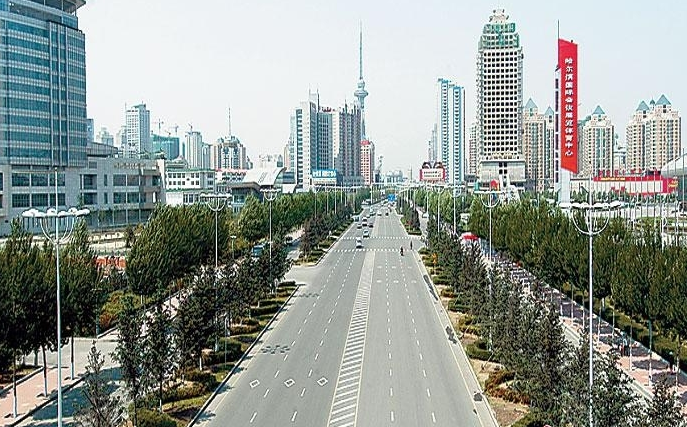
The second is to build a high-quality comprehensive three-dimensional transportation network. We need to improve the layout of the high-speed network, basically connect the main corridors of the eight-vertical and eight-horizontal high-speed railway, improve the quality of the national highway network, and accelerate the development of world-class airport and port clusters in the Beijing-Tianjin-Hebei Region, the Yangtze River Delta, and the Guangdong-Hong Kong-Macao Greater Bay Area. We need to improve the quality of the backbone network, coordinate the construction of new lines and the upgrading of existing ones, place equal emphasis on passengers and goods, accelerate the construction of high-speed railways, upgrade bottlenecked sections of ordinary national and provincial highways and connect those to be built, expand and upgrade the capacity of high-level inland waterways, and steadily build regional airports, general airports, and cargo airports. We will promote the implementation of the express delivery project "entering villages and factories and going to sea" to improve the inclusiveness of logistics services. We will strengthen the capacity of basic networks, increase the depth of transport connections, promote the construction of regional railways, speed up the construction of roads to and from border areas, implement the rural revitalization road project, and promote the construction of road safety facilities.
Third, we will take the lead in modernizing transportation in urban agglomerations. We will accelerate the construction of intercity railways and urban (suburban) railways around major city clusters and metropolitan areas, promote the development of urban rail transit in an orderly manner, and promote the "four-network integration" of trunk railways, intercity railways, urban (suburban) railways and urban rail transit. It is necessary to construct a highway loop system according to the actual situation, effectively separate urban traffic and transit traffic, and reduce traffic congestion.
Fourth, we will strengthen the integrated connectivity of the comprehensive transportation network and the service capacity of the whole chain. It is necessary to vigorously develop combined passenger transport and multimodal transport of goods, and promote the "one-ticket" and "one-ticket" services for the whole process. Improve the functional layout of the hub city level, and focus on the transfer and installation efficiency and collection and distribution system construction between the hub terminals and stations. Improve major logistics infrastructure networks such as the national logistics hub and the national backbone cold chain logistics base, and promote the formation of a modern logistics operation system of "channel + hub + network". Strengthen the comprehensive development of the hub and promote the deep integration with urban functions. We will comprehensively deepen reforms in key areas such as railways, the air traffic control system, and the road toll and maintenance system.
3. Building a modern energy system
During the "14th Five-Year Plan" period, actively respond to global climate change and the uncertainty of stable international energy supply, and work in both directions to accelerate energy transformation. It is necessary to control coal, stabilize oil and increase gas, vigorously develop non-fossil energy, and simultaneously improve the regulation capacity of the power system to build a clean, low-carbon, safe and efficient energy system.
First, accelerate the development of non-fossil energy. In order to support economic development and address climate change, non-fossil energy has become an inevitable choice. During the "14th Five-Year Plan" period, the competitive advantages of photovoltaic power generation and wind power market gradually emerged, we must adhere to centralized and distributed simultaneously, pay equal attention to onshore and offshore, build photovoltaic power generation and wind power bases, accelerate distributed development, and orderly construction of offshore wind power. We will start the hydropower development project on the lower reaches of the Brahmaputra River, make full use of the large hydropower regulation capacity, and build a number of integrated wind and water storage energy bases. Promote the upgrading of in-service coal power base to wind and fire (storage) integrated base. Safe and sound construction of coastal nuclear power.
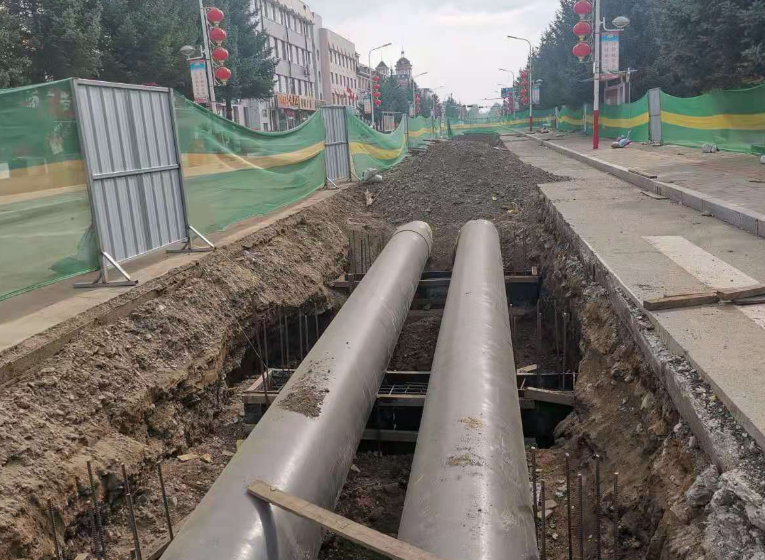
Second, we will significantly improve the power system regulation capacity. It is necessary to accelerate the construction of a new generation of power systems that can adapt to the high proportion and large-scale access of photovoltaic power generation and wind power, promote the intelligent transformation of power grid infrastructure and the construction of smart microgrids, and improve the power grid's acceptance, configuration and regulation of photovoltaic power generation and wind power. We will continue to promote the flexible transformation of existing coal power, accelerate the large-scale and commercial development of energy storage, vigorously build pumped storage power stations, implement energy storage demonstration projects such as electrochemistry, compressed air, hydrogen energy, and flywheel, enhance the capacity of the source network to load and store energy, and promote integrated planning, synchronous construction, and joint operation of photovoltaic power generation, wind power and energy storage.
Third, promote the positioning and transformation of coal and coal power. We should give full play to the basic role of coal and coal power in energy security, and at the same time strictly control the scale of development to leave room for the development of non-fossil energy. It is necessary to optimize the distribution of coal production, promote the concentration of coal production in resource-rich areas, and improve the elasticity of coal supply. We will step up efforts to replace coal with electricity, gradually reduce the bulk burning of coal by region, and reduce the proportion of coal in final consumption. Support photovoltaic power generation, wind power transmission in the western region and power grid operation in the eastern and central regions, and strictly control the scale and pace of coal power construction.
Fourth, expand the development space of the oil and gas sector. It is necessary to further strengthen the competitive transfer of oil and gas mineral rights, and promote the fair and open introduction of social partners for joint development of reserves difficult to use by oil enterprises. We will strengthen exploration and development of deep conventional oil and gas, offshore, and unconventional oil and gas such as shale oil, shale gas and coal-bed methane, focusing on the Sichuan, Tarim, Junggar, Ordos and Songliao basins. We will steadily expand natural gas consumption and accelerate the integration of natural gas with non-fossil fuels.
Fifth, improve the layout of natural gas infrastructure. We will speed up the construction and improvement of trunk gas pipelines and regional and feeder pipelines, and promote the formation of a nationwide network of connectivity. Focus on the construction of the China-Russia Eastern route, the second line of Sichuan gas transmission to the east, the third line of west gas transmission to the east and other main natural gas pipelines. Speed up the construction of Zhongyuan Wen 23, Liaohe gas storage group and other underground gas storage. Promote the construction of additional storage tanks at existing LNG receiving stations, improve the capacity of gas storage and emergency supply, and orderly advance the preliminary work of LNG receiving stations.
(4) Implementing the national water network project
During the "14th Five-Year Plan" period, we should speed up the construction of a national water network based on the national river and lake system, with transport and drainage projects as channels, controlled regulation and storage projects as nodes, and intelligent regulation as means, so as to comprehensively solve the problems of water resources, water ecology, water environment, and water disasters, and ensure water security at a higher level.

First, we will build embankments and comprehensively improve the main rivers of major rivers. We will comprehensively carry out the construction of major river embankments to meet standards, and promote the upgrading of key river sections involving major national strategic areas, economic zones, city clusters, and flood control cities in a timely manner. We will accelerate the comprehensive management of major rivers and lakes, focusing on the Yangtze River regime control, bank collapse management and the "two lakes management", and the Yellow River channel and beach areas, so as to restore flood flow and ecological functions of river channels and enhance their ability to cope with major regional floods.
Second, we will promote the construction of major water transmission and distribution channels. We will build national backbone water transport and drainage channels, and build a number of cross-basin and cross-regional backbone water transport channels. We will promptly promote the construction of follow-up projects for the eastern and middle routes of the South-to-North Water Transfer project, and carry out comparative selection and demonstration of planning schemes for the western route. Speed up the construction of water diversion projects in central Yunnan, river diversion and Huaihe river, and water resource allocation in Pearl River Delta and western Chongqing. The second phase of the Huaihe Waterway into the sea and the backbone drainage channel of Taihu Lake were built to improve flood discharge capacity.
Third, we will promote the construction of comprehensive water conservancy projects and regulation and storage projects. We will speed up the construction of comprehensive control hubs such as Dtengxia and Yangxi, with a focus on building a number of large reservoir projects in the southwest and other regions, accelerate the reinforcement of existing large and medium-sized reservoirs in danger, and advance the construction of major flood storage and detention areas and some general flood storage and detention areas, so as to bring into full play the comprehensive functional benefits of water conservancy infrastructure.
Fourth, we will promote the intelligent transformation and upgrading of the national water network. Using the new generation of information technology, on the basis of online real-time monitoring and through network coordination and sharing, we will accelerate the construction of smart water conservancy projects, accelerate the intellectualization of water conservancy projects, the digitization of river basins and water systems, and the intellectualization of the national water network. We will build big data centers and dispatch centers for the national water network, and promote the construction of joint dispatch and comprehensive monitoring systems for water projects in the seven major river basins, including the Yangtze and Yellow Rivers.
- EMERSON
- Honeywell
- CTI
- Rolls-Royce
- General Electric
- Woodward
- Yaskawa
- xYCOM
- Motorola
- Siemens
- Rockwell
- ABB
- B&R
- HIMA
- Construction site
- electricity
- Automobile market
- PLC
- DCS
- Motor drivers
- VSD
- Implications
- cement
- CO2
- CEM
- methane
- Artificial intelligence
- Titanic
- Solar energy
- Hydrogen fuel cell
- Hydrogen and fuel cells
- Hydrogen and oxygen fuel cells
- tyre
- Chemical fiber
- dynamo
- corpuscle
- Pulp and paper
- printing
- fossil
- FANUC
- Food and beverage
- Life science
- Sewage treatment
- Personal care
- electricity
- boats
- infrastructure
- Automobile industry
- metallurgy
- Nuclear power generation
- Geothermal power generation
- Water and wastewater
- Infrastructure construction
- Mine hazard
- steel
- papermaking
- Natural gas industry
- Infrastructure construction
- Power and energy
- Rubber and plastic
- Renewable energy
- pharmacy
- mining
- Plastic industry
- Schneider
- Kongsberg
- NI
- Wind energy
- International petroleum
- International new energy network
- gas
- WATLOW
- ProSoft
- SEW
- wind
- ADVANCED
- Reliance
- YOKOGAWA
- TRICONEX
- FOXBORO
- METSO
- MAN
- Advantest
- ADVANCED
- ALSTOM
- Control Wave
- AB
- AMAT
- STUDER
- KONGSBERG
- MOTOROLA
- DANAHER MOTION
- Bently
- Galil
- EATON
- MOLEX
- Triconex
- DEIF
- B&W
- ZYGO
- Aerotech
- DANFOSS
- KOLLMORGEN
- Beijer
- Endress+Hauser
- MOOG
- KB
- Moxa
- Rexroth
- YAMAHA
- Johnson
- Westinghouse
- WAGO
- TOSHIBA
- TEKTRONIX


Email:wang@kongjiangauto.com



































































































































